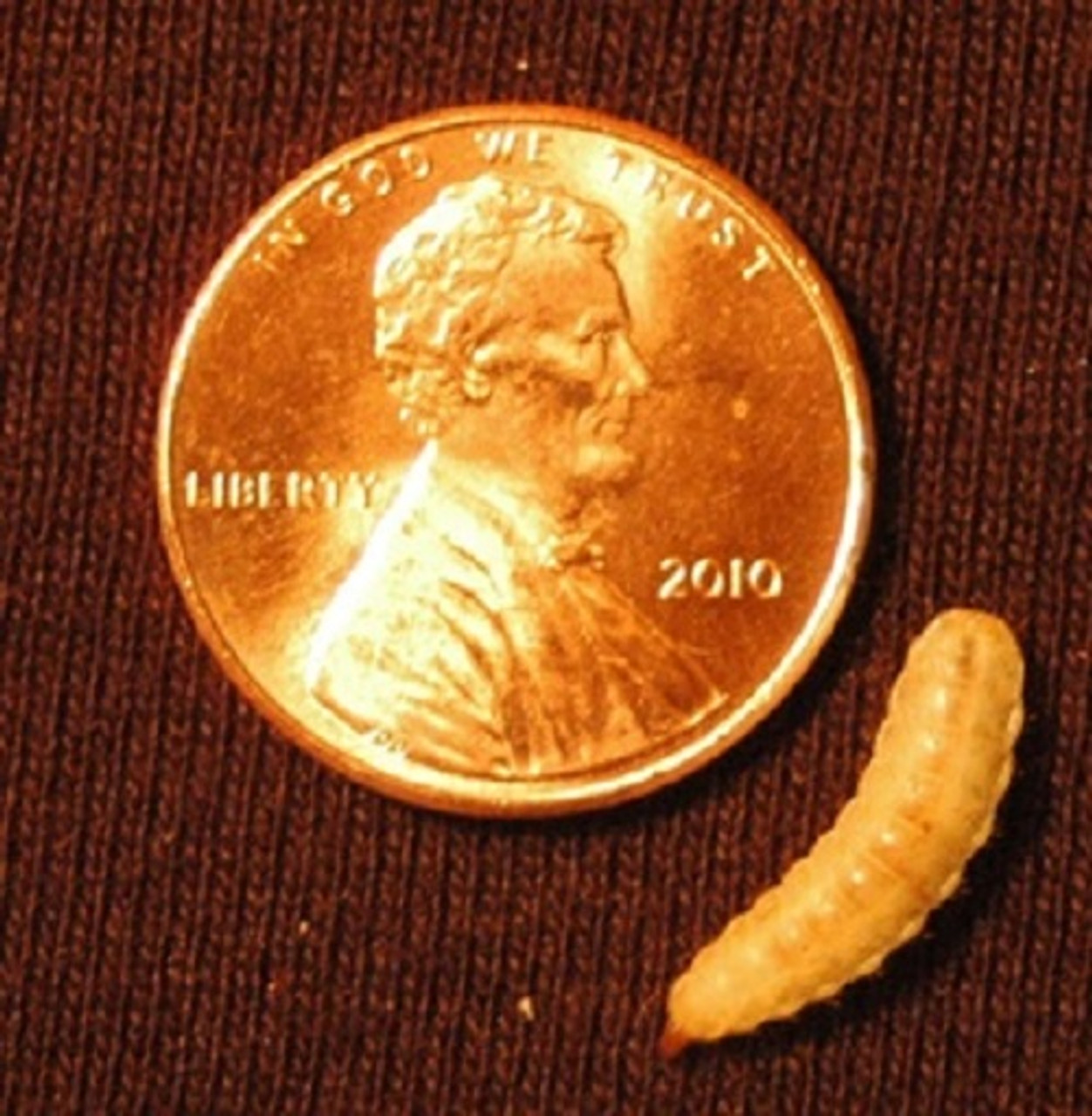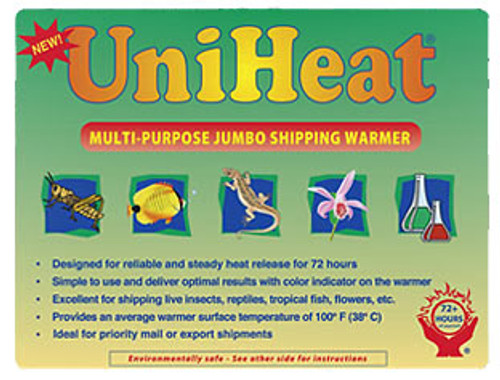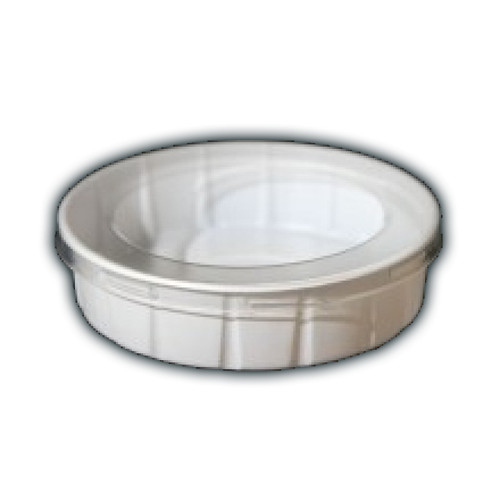Product Description
ORIGINAL PHOENIX WORMS ®
Black Soldier Fly Larvae
The Superior Calcium-Rich Feeder
150 per cup SM 100 per cup Med/LG
For live delivery guarantee: if your temps are below 45 or above 85° the "Hold for Pickup" button must be checked above!
Phoenix Worms® are a fantastic way to get more calcium into your reptile's diet. They are ready to serve with no need to dust or gut load.
We recommend Phoenix Worms especially to breeding females and hatchlings.
They are soft-bodied, tasty and more wiggly than other feeders, a very exciting catch for your herps!
Look at these comparisons of calcium in parts per million:
| Phoenix Worm | 8155 ppm |
| Cricket | 345 ppm |
| Superworm | 124 ppm |
| Mealworm | 133 ppm |
FAQs
Q. What size should I purchase?
Small size are 7mm (about 5/16") long, and are for smaller animals:
Finches, skinks, carnivorous plants, dart frogs; baby turtles, chameleons, geckos, and water turtles. Tropical fish that eat floating food will benefit from the calcium and protein these offer.
Medium size are 12mm (0.3 to 0.4") long and are the size preferred by many herps:
Small bearded dragons, skinks, small chameleons, anoles, turtles; young Leopard, Gargoyle, Crested, and Leaf Tail Geckos. This is also a good size for larger tropical fish.
Large size are 18mm (0.5 to 0.75" long) and are the right size for larger pets.
Bearded dragons, large geckos, monitors and veiled chameleons are all huge fans of large Phoenix Worms!
Q: When will my worms ship?
We ship Monday - Friday. Orders placed by 12pm PST are shipped the same day; orders placed after 12pm PST are shipped on the next shipping day (M-Fr). You will be given a tracking number the day your order ships.
Q: Should I refrigerate Phoenix Worms?
Well, Maybe
Phoenix Worms can tolerate high temperatures but will have the best shelf life when stored at 50 to 60 degrees F.
A wine cooler or basement are great storage places but setting the cups near an A/C vent will work just fine. If you have a warmer spot in your fridge like the butter tray, this is often the perfect temperature.
Although it's possible to "hold" worms for months when stored at 50 degrees, you should only order the number of worms that will be fed off within 3 weeks so your animal will have fresh food.
Q: Should I leave the top off of my cup of Phoenix Worms to give them air?
NO
The special cup must be kept closed to ensure a long shelf life. Your Phoenix Worms will be able to breathe in their cup (we promise). Do not transfer the worms into another container for storage!
Q: What is the sawdust-like stuff in the cups? Is this food for the worms? Do I need to feed them anything?
The packing material is an organic medium but it is not food. Phoenix Worms must not be fed; food added can spoil the bedding and cause growth of bacteria, fungus, and other problems.
Just add a few drops of water if the bedding if worms begin to appear too dry.
Q: How do I get the packing media off the worms? Is it harmful if my pet eats it?
Pour out the worms you plan to serve in a small dish and let them dry for a few minutes. The media will fall off the dry worms and you can easily blow away any residue that remains.
Another way to clean worms quickly is to pour approximately the amount you want to feed into a cup/bowl of water. The worms will float and the media will sink to the bottom. Lift off the floating worms from the water surface with a hand strainer, pour onto a paper towel, and pat dry.
Note: If your pet should accidentally ingest any particles, they are harmless.
Q: How do you keep Phoenix Worms from climbing out of their dish?
Just make sure you serve dry worms in a dry dish. Any moisture will enable Phoenix Worms to climb! You can also purchase our "No Escapee" Feeder dishes very inexpensively.
Q: My reptile passed a whole Phoenix Worm in his poop! What does this mean?
It's sort of like when a human passes a whole piece of corn in their feces, it doesn't mean corn is a bad food, it just means it was swallowed without chewing. 'Pinning' is a common practice used by frog breeders since frogs swallow their prey whole to ensure they get all the good 'insides' of the feeder insects. If your reptile is zealous and is gobbling up thier worms, just poke a hole in them with a sewing needle before feeding to ensure all the inner goodness is digested!
Q: Some of my Phoenix Worms are turning dark. Are they dead or dying?
Usually the answer is no. Turning dark is natural as the worm matures so this is seen more often in the large size.
Dark worms actually have the highest levels of calcium. We suggest that you feed any dark worms first while they are still wiggly.
Note: Dark, still, worms are trying to pupate but can still be fed. If conditions are just right, you may have a black soldier fly emerge in 10-14 days. Animals LOVE to catch the fly and eat it, too!
Q. Are all BSF larvae the same?
To ensure safety, genuine Phoenix Worms is the only brand that was subjected to breeder testing for more than 5 years before being sold to the public. Reared in a completely closed environment, our worms are fed a proprietary diet which guarantees their nutritional values and provides balanced calcium:phosphorus for your pets.
Other brands pack their worms in dirt, wood shavings, and other materials but we use a unique medium that is 100% organic and harmless. Customers tell us that other brands turn into flies quickly and do not have the long shelf life of Phoenix Worms.
Q. Can my reptiles eat the black flies, will they bite?
Animals LOVE to catch the fly and eat it, too!
The black soldier fly (Phoenix worm in the adult stage) closely resembles the organ pipe mud dauber wasp, but lacks a stinger and is harmless.
The flies are harmless for other reasons as well. Unlike most other flies, they do not have functional mouth parts which means they don't eat or regurgitate on human food. For these reasons, BSF are not associated with the transmission of disease, like some other flies are.
You won't need to worry about them biting or stinging your reptiles at all.
Q. There is an ammonia smell. Is this normal?
A. An ammonia smell means that there is a dead worm or worms in your cup. Please remove/discard any obviously dead worms, then replace the worms and media back into the cup and leave the lid off for a couple of hours. This will allow the odor to dissipate and the packing media will dry out a bit. Then replace the lid. Live worms are fine to feed.
Phoenix Worm® is a registered trademark of Insect Science Resource LLC. All rights reserved












